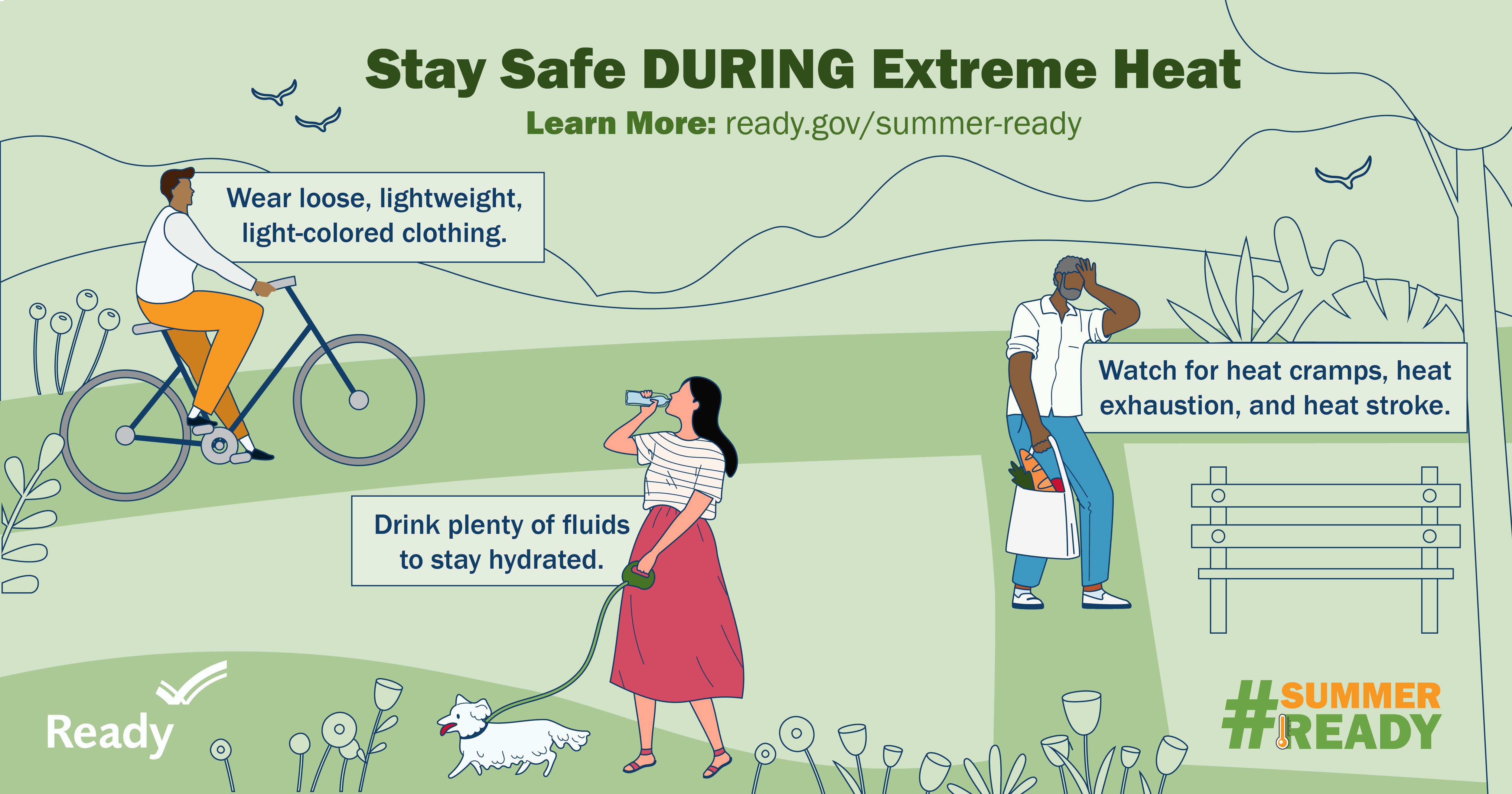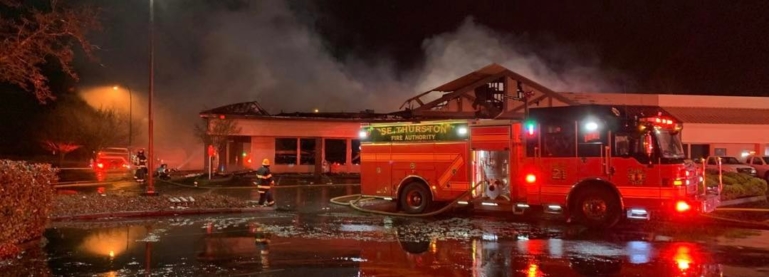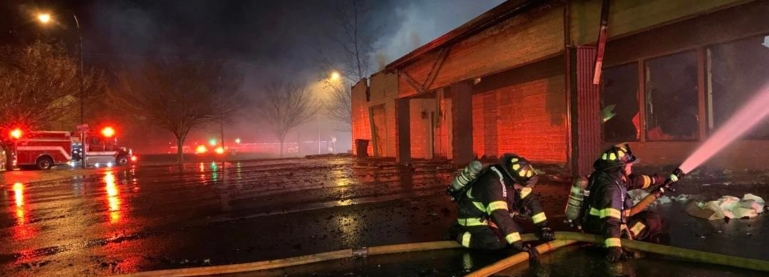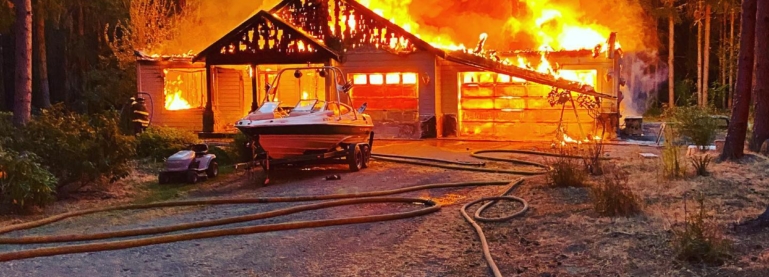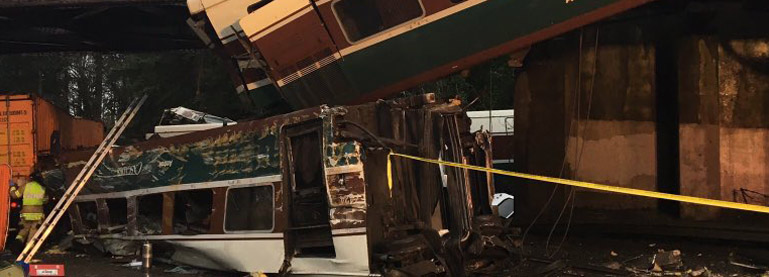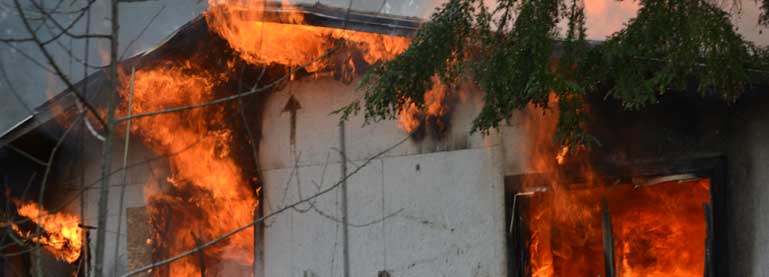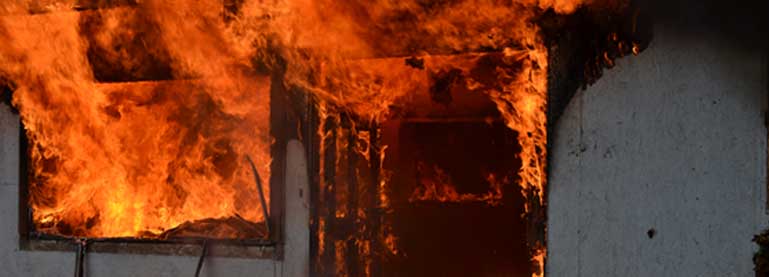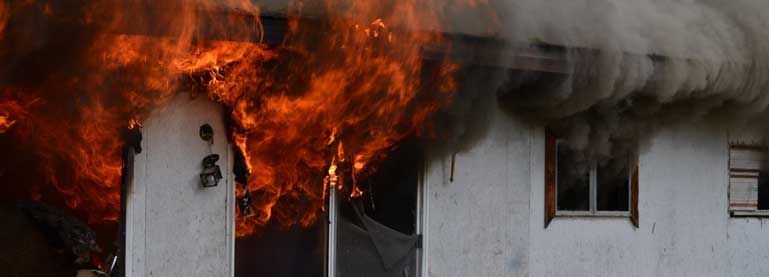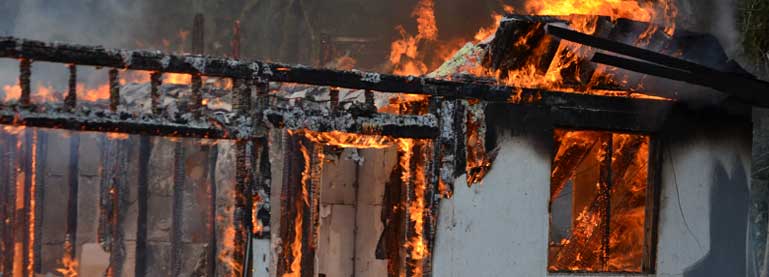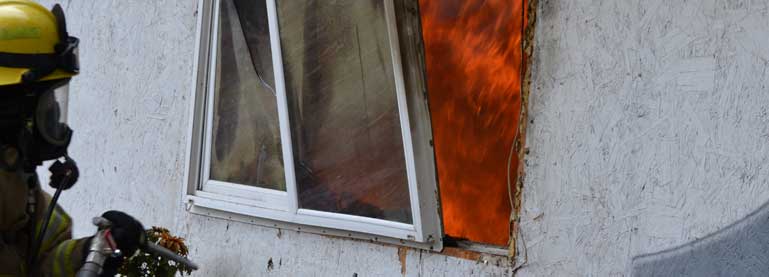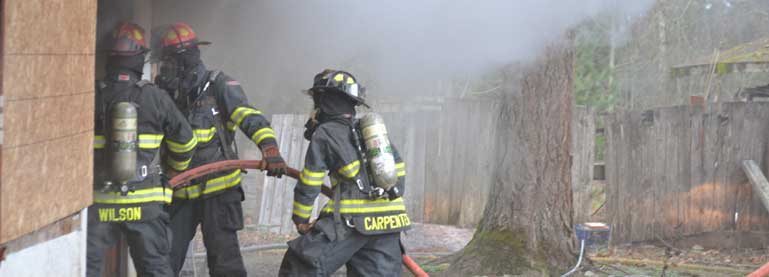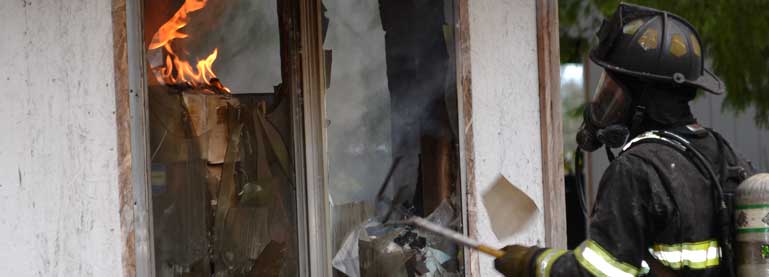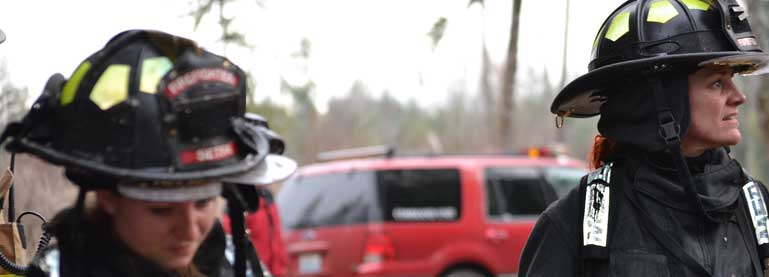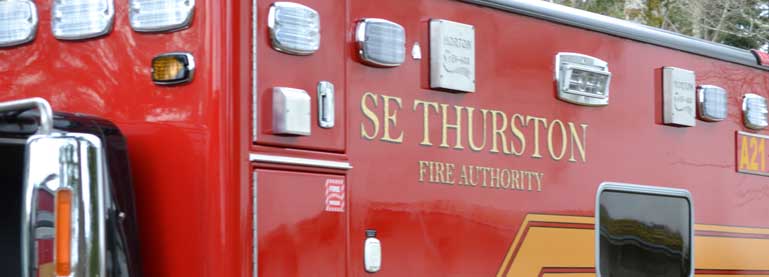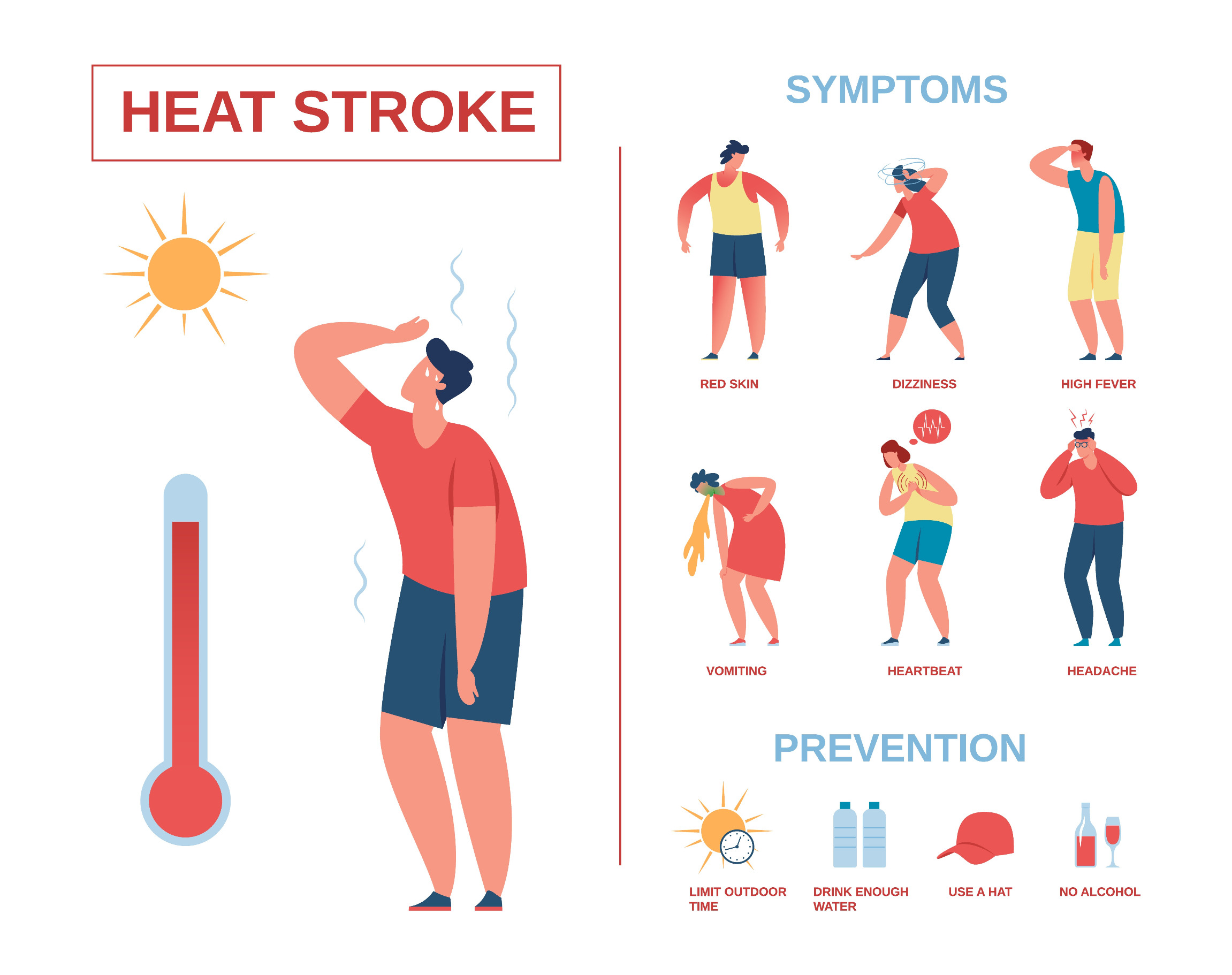We’ve been experiencing extreme heat in the last few weeks, and we’re not quite out of the woods yet! If you’re going to be out in the heat these following weeks, follow these tips to stay safe!
Drink plenty of fluids and stay hydrated.
Make sure you bring and drink lots of water, no matter where you’re going or how long you plan to be out. In heat like this, our bodies can get dehydrated much quicker and be at greater risk for heat-related illness. Drinking plenty of water can help keep you safe and healthy.
Wear loose, lightweight, light-colored clothing.
When going outside, your choice in clothing can make a big difference in how well you weather the heat. Thick, tight fitting, or dark clothing affects how your body regulates heat and can even cause you to absorb more heat than normal. Loose fitting, lighter colored, and lightweight clothing absorbs less heat, allows your body to breathe better, and is overall less of a strain on you.
Watch for heat cramps, heat exhaustion, and heat stroke.
Heat cramps, heat exhaustion, and heat stroke are dangerous heat-related illnesses that you should be aware of and on the lookout for. Heat cramps can come in the form of painful muscle cramps or spasms accompanied by sweating, heat exhaustion can come with heavy sweating and a rapid pulse, and heat stroke can cause seizures, confusion, loss of consciousness, and other terrible conditions, and can be fatal. While this isn’t always the case, heat-related illnesses sometimes progress in that order, heat cramps, heat exhaustion, then heat stroke. Keep an eye out for symptoms in yourself and others, and be ready to get somewhere cool and drink lots of fluids if symptoms present themselves.
